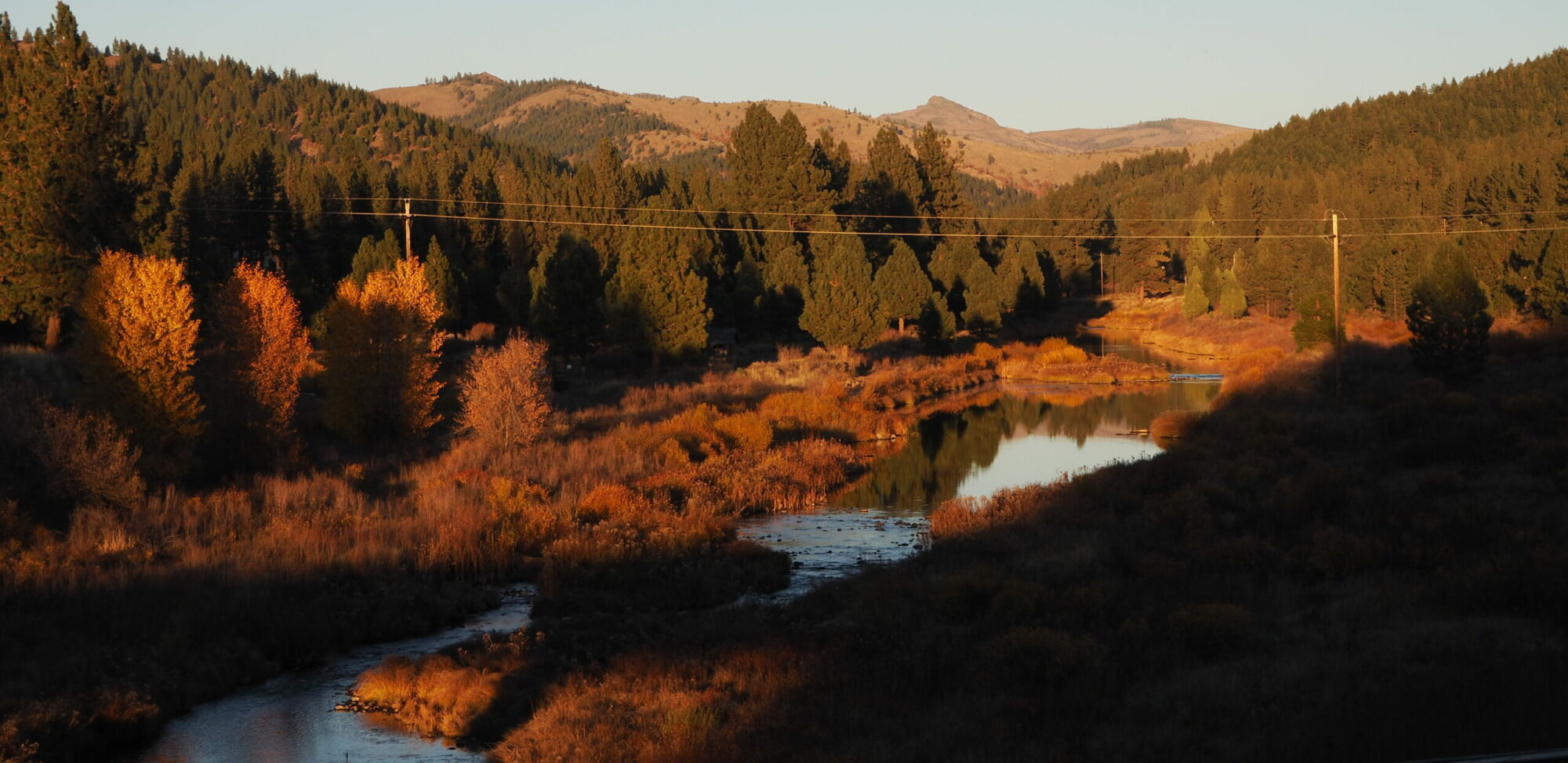
It has been a truly scary week for forests already under stress: The US Forest Service has released a new draft decision notice (DN) for the massive, unprecedented (non emergency portion of the) “Community Destruction (logging) Project” after withdrawing the first DN in July, following objections. The project is the subject of an ongoing lawsuit in which Feather River Action! is a plaintiff, along with Plumas Forest Project and John Muir Project. If the Forest Service is allowed to proceed, it would significantly impact Feather River watershed forests and communities, and areas beyond.
This decision reinstates the threat for areas previously withdrawn, and doubles down on proven failing “management” strategies. The chosen Alternative 4 is even worse than the previous Alternative 1. In the USFS own words: “Alternative 4 would have effects similar to those described for Alternative 1. Areas with only manual treatments would be reduced under this alternative, covering only 25,464 acres compared to 34,850 acres in Alternative 1 and 44,926 acres in Alternative 2.”
This means even more acres suffering industrial logging.

At stake includes what is likely California’s only inland temperate rainforest. The Strawberry Valley area, receiving up to 80 inches of rain annually, harbors a unique microclimate that supports an exceptionally lush and diverse forest community unlike anywhere else in the Sierra Nevada.
This rare ‘rainforest’ ecosystem boasts a dense subcanopy of Tanoak, Pacific Dogwood, Bigleaf Maple, Madrone, and the elusive Pacific Yew, et, sheltered beneath a cathedral of towering conifers including majestic Sugar Pine, Douglas Fir, White Fir, Incense Cedar, and the occasional Ponderosa Pine. Many of these trees reach record sizes. Some of these ancient sentinels, true giants of the forest, exceed 9 feet in diameter and soar beyond 260 feet into the sky.
The mesic (moist) forest floor teems with botanical biodiversity: Twinflower, Pacific Starflower, Wild Strawberry, Prince’s Pine, Bracken Fern, Pacific Sword Fern, Giant Chain Fern, Pathfinder, Bride’s Bonnet, Solomon’s Seals, Bedstraw, Spotted Coralroot Orchid, Rattlesnake Plantain, and Fairybells are just some of the many plant species found in this unique environment. Lichens and mosses adorn the ancient canopies and embellish even the smallest diameter trees. When branches fall from the canopy, one is awestruck by the diversity of intricate lichens revealed.
Birds fill these ancient forests with song. The “see-bit, see-bit, see-bit, see-see-see-see” of the Nashville Warbler, the “chip-chewy” of the MacGillivray’s Warbler, the raspy “cheer, cheerful, charmer” of the Western Tanager, and the unmatched musical symphony of the Pacific Wren harmonize in lively choruses. As night falls, the whistled “too-too-too” calls of Northern Saw-whet Owls echo through the forest, while the haunting “who-who-who-whooo” calls of imperiled California Spotted Owls resonate as they patrol the vanishing Old-Growth habitat they desperately need for survival.

Decision 2 of the CPP Project threatens vast swaths of this irreplaceable ‘rainforest’, imperiling a diverse array of interconnected Old-Growth forests. Near Strawberry Valley, the Deadwood Creek Watershed is at great risk. To the north, the project endangers areas surrounding the Sly Creek Recreation area, including Sly Creek Reservoir, Harrison Ridge, Sly Creek itself, and Pinkard Creek. East of Strawberry Valley, the threat extends to Brushy Creek and Slate Creek, including the remote Slate Creek canyon to its confluence with the North Yuba River. The project’s reach further stretches above the North Yuba from Racetrack Ridge westward and southward to encompass the western side of Bullard’s Bar Reservoir, all the way south to near the town of Dobbins. This expansive area represents the majority of what may be the Sierra Nevada’s only ‘rainforest’, supporting the rich biodiversity previously described, not to mention the immense and delicate carbon storage that could be destroyed.
Beyond these ‘rainforest’ zones, the project also jeopardizes numerous other Old-Growth areas. Among these is the Valley Creek Special Interest Area, recognized in the mid-1940s and set aside in 1961 for its unique ecology and rich botanical biodiversity. Although Valley Creek SIA has been protected for decades, the USFS now has the audacity to shamelessly degrade it through this logging plan. The project also threatens unique Eastside Mixed Conifer Forests, home to large Douglas Firs and Sugar Pines – uncommon habitats in a region otherwise dominated by Jeffrey Pine forests. Furthermore, some of the last remaining Old-Growth forests that survived the North Complex and Dixie Fires are at risk, along with many other ecologically significant areas.
Please inform yourselves and get involved. A perfect opportunity is…..
Thursday Nov. 7th there will be a USFS meeting online about the project –here is the link to register: https://events.gcc.teams.microsoft.com/event/cbfa842c-2f66-48f4-b14a-9ef24f7e37f2@ed5b36e7-01ee-4ebc-867e-e03cfa0d4697
It would be great for the USFS to face some probing questions over their plans to decimate the forest with heavy equipment and toxic chemicals, especially from locals who would be forced to deal with the impacts of groundwater pollution, soil compaction, and faster, more aggressive wildfires burning through damaged landscapes. See link to new EA documents: https://www.fs.usda.gov/project/plumas/?project=62873.
Please spread the word to your networks and all concerned. Only a corrupt agency awash with timber profits would unleash devastation on local forests that would worsen the climate emergency, expose local communities to greater wildfire risk and damage and release massive quantities of carbon from forest storage, all while insisting they are doing the opposite. They plan to have speaker after speaker pushing their logging agenda, but it’s time they hear from the public they have been ignoring for years.
It’s time to get involved, learn more, and support our lawsuit, given the clear science that industrial logging harms biodiversity, climate and local communities.
